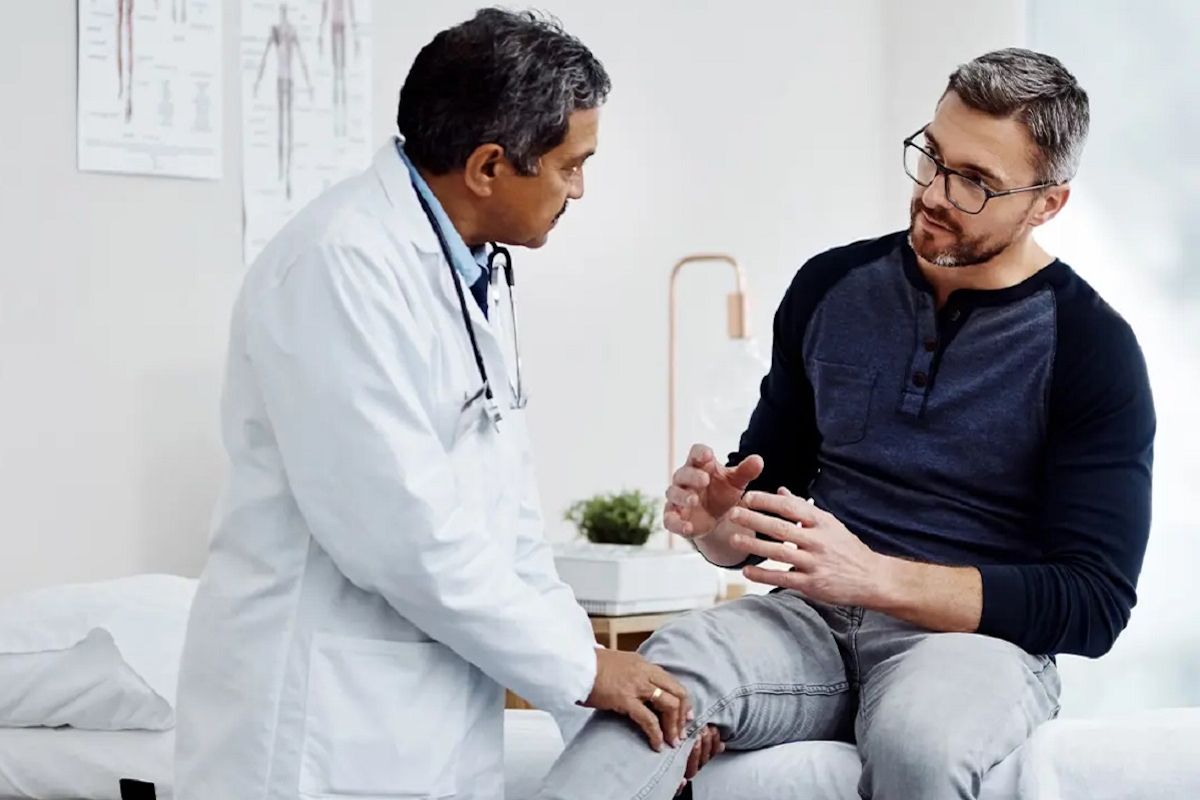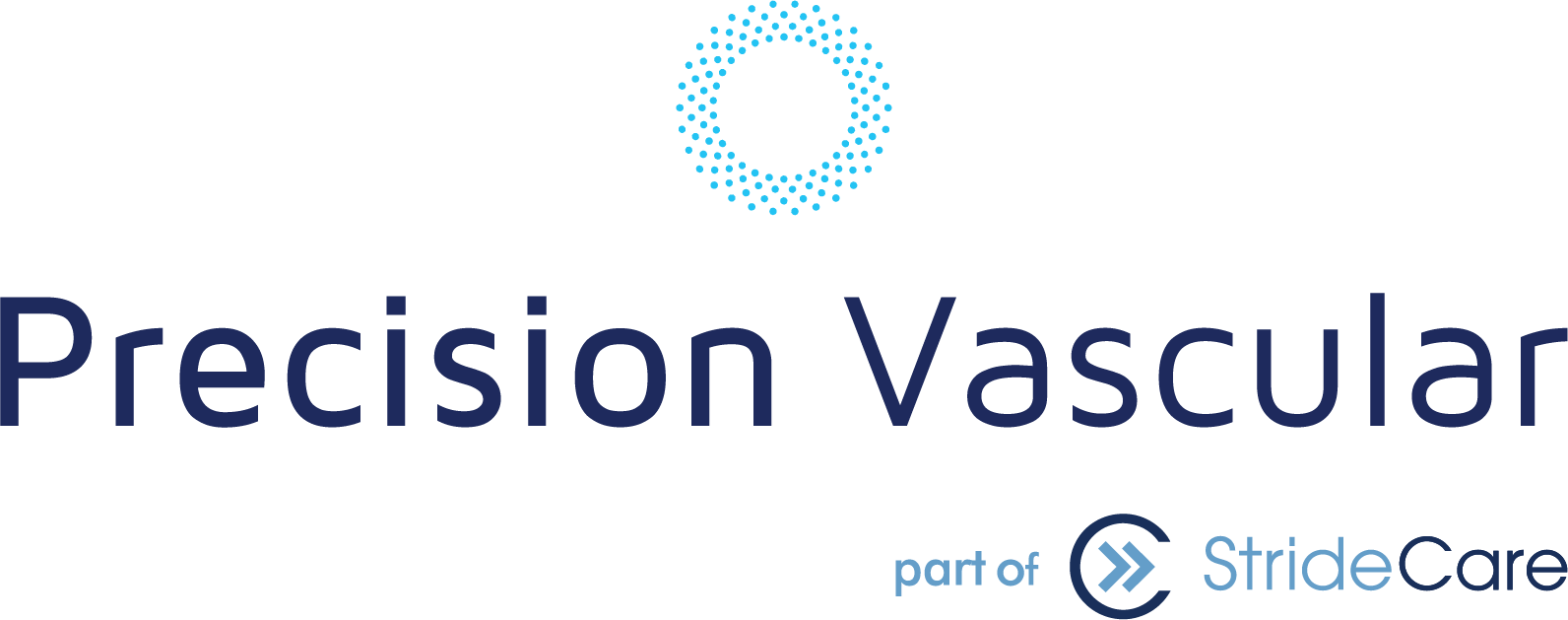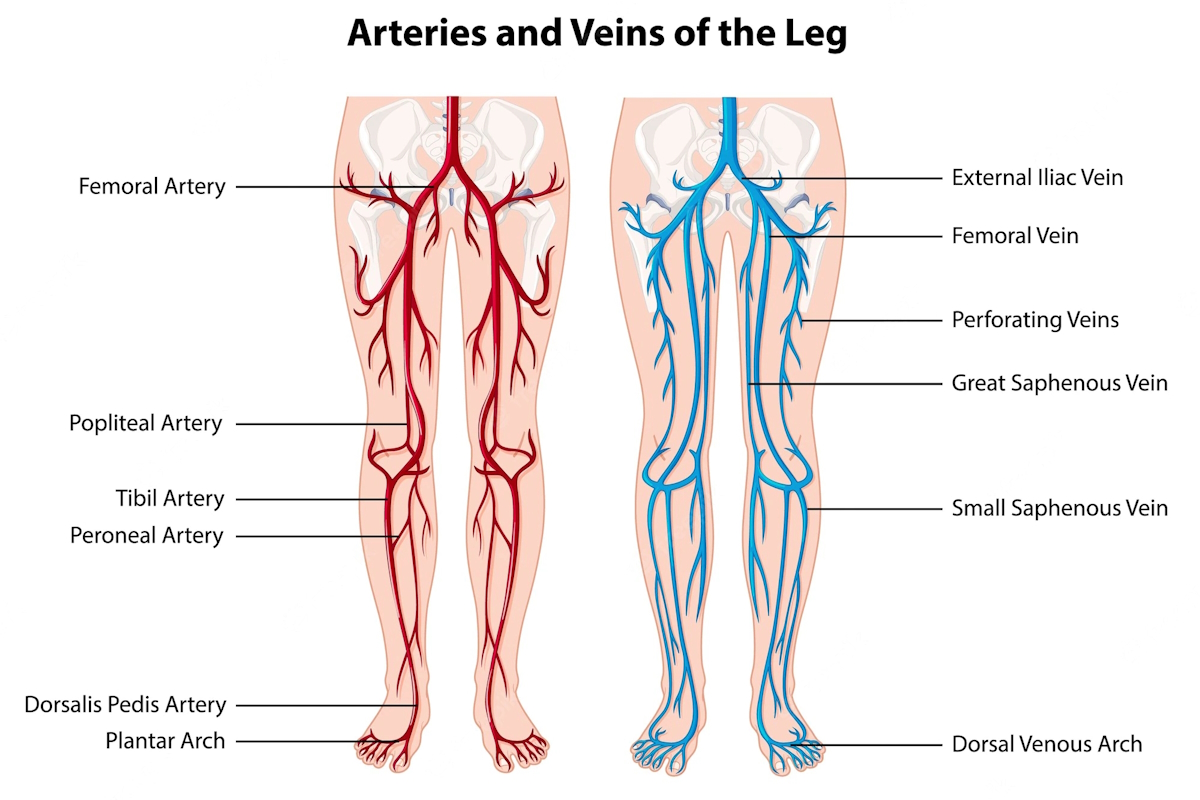It can be challenging to know what’s causing your leg pain. This is especially true if there isn’t a specific activity to point to, such as an intense workout at the gym, a long day on your feet at work, or an entire day doing yard work. All you know is that your legs are either constantly tired and sluggish or painful. And the growing list of symptoms isn’t improving. The odds are that something vascular-related is happening beneath the surface. Still, you’re not entirely sure what that means, if it has to do with your veins, arteries, or both, and how to explain everything to your doctor adequately.
Thankfully, our team of vascular specialists at Precision Vascular is on the cutting edge of vascular treatments that can get you back to enjoying life. This is especially true when you seek help for your leg pain sooner rather than later. While we don’t expect our patients to understand the vascular system inside and out, it is helpful when they have a base understanding of how everything works. That includes knowing the difference between veins and arteries and how they affect your leg pain. This way, we can create a treatment plan that addresses your unique needs.
Want to know what’s causing your leg pain? Call 866-552-4866 for a consult with our vascular specialists. Appointment
Vascular System Basics Everyone Can Understand
When we say vascular system, also called the circulatory system, we refer to all the vessels that carry blood and lymph through the body to support critical functions. There are veins that return deoxygenated blood from your organs back to your heart. The veins in your legs include valves that are supposed to help keep blood from flowing backward. Then there are your arteries, which serve a slightly different function from veins, delivering oxygenated blood away from the heart to the rest of your body. When these processes work as they should, you are happy, healthy, and likely living your best life. When they aren’t, you can experience a variety of life-altering symptoms.
This is because veins can age and struggle to carry blood as efficiently as they used to. As a result, blood flow slows to a crawl, vein valves malfunction, and blood can begin flowing backward in the wrong direction causing your veins to bulge, stretch, and enlarge. Meanwhile, arteries also risk becoming clogged by fatty cells such as plaque buildup or are damaged by other complications. When this happens, oxygenated blood can’t reach your organs quickly.
Many factors contribute to vein disease or artery disease. These include genetics, age, gender, obesity, poor diet, excessive drinking and smoking, jobs that require a person to sit or stand for long periods, or sedentary lifestyles.

But which is it that’s causing your unique leg pain—your veins or arteries?
If Your Leg Pain Includes These Symptoms, It Could Be Vein-Related
- Pain, either while at rest or while moving
- Tired and heavy legs
- Bulging, twisted leg veins
- Swollen legs and feet
- Numbness
- Itching, prickling, pulling, or crawling sensation
- Burning sensations
- Cramps
- Discolored skin
- Persistent pelvic pain in women
- Skin that’s red and/or warm to the touch
Related vein conditions include the following:
- Varicose Veins — Varicose veins affect roughly 25 million men and women in the United States and are characterized by blue or dark purple veins that are lumpy, bulging, or twisted in appearance. This is where the veins stop working properly, fill up with blood, and enlarge or swell due to a high volume of fluid build-up.
- Venous Insufficiency — With venous insufficiency, one or more veins fail to return blood efficiently to the heart. As this condition worsens, chronic venous insufficiency (CVI) develops with broken valves in the legs that don’t hold a seal. As a result, blood pressure builds up and leads to pooling of blood, swelling, and skin changes.
- Deep Vein Thrombosis (DVT) — These life-threatening blood clots form in the deep, large veins of the pelvis, legs, thighs, or arms and reduce or block the flow of blood in a vein.
- Restless Leg Syndrome (RLS) — Approximately 1 in 10 adults suffer from Restless Leg Syndrome (RLS), which is classified as a sleep disorder since it is best known for rearing its ugly head while a person is at rest — especially when sitting or lying down. Restless Leg Syndrome can feel like pins and needles or itchiness and only improves or is eliminated completely with movement.
- Phlebitis and Thrombophlebitis — Phlebitis is inflammation of a vein. Thrombophlebitis is inflammation causing a blood clot to form and block one or more veins, usually in your legs.
Have questions about whether your leg pain is related to vein disease or artery disease? Call 866-552-4866 for a consult. Appointment
If Your Leg Pain Includes These Symptoms, It Could Be Artery-Related
- Painful cramping in the legs and hips while active but better at rest
- Changes in the leg appearance (shiny skin, lost leg hair, color)
- Cold legs and feet
- Open sores that don’t heal
- Dry, scaly, flaky, or leathery skin
- No pulse or a weak pulse in legs
Related artery conditions include the following:
- Peripheral Arterial Disease (PAD) — Also known as arteriosclerosis, PAD affects 5 million U.S. adults. This is a condition where plaque build-up on the walls of blood vessels causes them to narrow and leads to poor blood circulation. When this happens, not only does a person experience the symptoms above, but they are at risk for coronary artery disease, heart attacks, or strokes. While PAD symptoms vary widely, up to 4 in 10 people don’t even have symptoms at first.
- Critical Limb Ischemia — This is an advanced and severe form of PAD. Critical limb ischemia drastically reduces blood flow to the lower body and lower extremities, causing various leg pain symptoms that won’t go away, including open sores and ulcers. Patients who have critical limb ischemia typically have diabetes or have a history of having high cholesterol, which can contribute to the main arteries in the body being blocked.
Your Leg Pain Is Treatable At Precision Vascular
Do you have chronic leg pain? Are you worried that your symptoms go beyond an injury or intense workout and could be a sign of more serious health conditions related to your veins and arteries? Call us! You can absolutely recover from these symptoms and live your best life moving forward, but early detection and treatment are the key to finding relief.

Established in 2012, Precision Vascular was the first independent vascular and interventional radiology practice in North Texas. Since then, the practice has grown significantly and has expanded the specialty team to include vascular surgeons and vein specialists.
Precision Vascular’s experts are leaders in advanced techniques and treatment to help prevent conditions that reduce quality of life. They create comprehensive artery and vein treatment plans that look beyond only cosmetic problems to detect underlying complications. With multiple locations across North Texas, Precision Vascular’s specialists are committed to delivering outstanding and safe care with compassion and concern for all their patients.
Request an appointment for an evaluation to discuss your options. For a consultation with one of our specialists, please contact us at 866-552-4866 or complete the appointment form.
AppointmentPrior to starting any new treatment or questions regarding a medical condition, always seek the advice of your doctor or other qualified health provider. This information is not a substitute for professional medical advice.
Precision Vascular serves the North Texas area including Dallas, Mesquite, Craig Ranch, Sherman, Dennison, Arlington, Fort Worth, Southlake, South Dallas, North Dallas, Addison, Carrollton, Richardson, Garland, Highland Park, University Park, Park Cities, Plano, Frisco, Prosper, Allen, McKinney, Prosper, Irving, Grand Prairie, Denton, Lewisville, Flower Mound, HEB, Hutchins, Duncanville, DeSoto, Cedar Hill, Lancaster, Cockrell Hill, and all North Texas.
*Patient stories are true. Names and/or photos may be changed to protect patient confidentiality.


